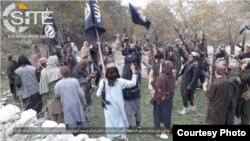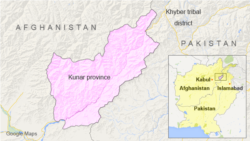Almost a week since the Afghan Taliban trumpeted the defeat of the Islamic State in Afghanistan’s Kunar province, U.S. officials remain wary, though they concede the terror group’s grip on territory in rural areas appears to be slipping.
The latest assessment is consistent with U.S. appraisals of previous claims by both Taliban and Afghan government officials, which they say, while based in fact, have at times overstated gains against one of the Islamic State’s most resilient and dangerous affiliates.
“The Taliban’s campaign against ISIS-Khorasan in Kunar province is consistent with Taliban public statements to rout the group from Afghanistan,” a U.S. counterterrorism official told VOA, using an acronym for the terror group.
“ISIS-Khorasan has continued to face pressure from the Taliban in Kunar province this year,” the official said, cautioning, “Recent attacks in Kabul claimed by ISIS-Khorasan indicate the group is still active and capable of conducting attacks in urban centers.”
Taliban officials first started sharing word of the Islamic State’s defeat in Kunar on March 14, saying it was the result of a 14-day operation that took advantage of better weather across the mountainous, northeastern Afghan province.
“The entire province of Kunar was cleared of Daesh criminals and the people were rescued through this victory,” the Taliban said in a statement, using the Arabic acronym for the terror group.
The statement also claimed 114 IS-Khorasan members surrendered to Taliban forces, while more than 100 others fled.
But U.S. officials have pushed back against the idea that the Taliban alone were responsible for the recent gains.
“Several dozen ISIS-Khorasan fighters have also surrendered to Afghan forces over the past few weeks,” the counterterrorism official said, noting ongoing operations by both the Afghan government and the U.S.-led coalition.
Top U.S. military officials also argue the Taliban’s efforts against IS-Khorasan, also known as IS-K or ISIS-K, have benefited from “very limited” U.S. support.
"We suspended actively pursuing Taliban units engaged with ISIS-K,” a military official said on the condition of anonymity, pointing to fighting late last year in Nangarhar province.
“We also conducted some strikes on known ISIS-K locations,” the official said. “However, those strikes were not coordinated with the Taliban."
'A bloody mess'
But top U.S. officials admit that Taliban efforts against IS-Khorasan have proven effective.
"We've watched the Taliban compress and crush ISIS’s presence on the ground in southern Nangarhar province," U.S. Central Command’s General Kenneth McKenzie told lawmakers earlier this month.
“That's some of the worst terrain in the world," he said. "It was a bloody mess, but they did it."
Yet questions persist about just how debilitating defeats in Nangarhar province and elsewhere have been for IS-Khorasan.
Recent U.S. estimates on the number of IS-Khorasan fighters have varied between 1,000 and as many as 5,000. Just last month, U.S. Forces-Afghanistan said it was possible IS-Khorasan had “lost up to half its force” because of pressure from coalition, Afghan and Taliban operations.
Still, U.S. military official caution they have “low confidence” in the lower estimates. They note that IS-Khorasan has been repeatedly pushed to the brink, losing key leaders while seeing its numbers whittled to the low hundreds, only to bounce back.
“Losing territory does not equate to the end of ISIS and its affiliates,” a Defense Department inspector general's report concluded last month. “Even when ISIS-K was based in Nangarhar, it had established cells in other parts of the country and demonstrated the ability to spread and recruit.”
Looking ahead
Some analysts also caution that the leaders of IS-Khorasan, like their counterparts in Iraq and Syria, may be less focused on holding territory, instead looking to lay the groundwork for a larger resurgence after U.S. forces leave Afghanistan.
U.S. intelligence indicates that despite having lost territory in Nangarhar and Kunar provinces, IS-Khorasan still has strongholds in Herat province and parts of Kabul, while maintaining smaller cells in Helmand, Kapisa and Baghlan provinces.
There are also indications that IS-Khorasan is focusing on more global ambitions.
"Of all of the branches and networks of ISIS, ISIS-K is certainly one of those of most concern," Russell Travers, former acting director of the U.S. National Counterterrorism Center, told lawmakers last November.
"They have attempted, certainly, to inspire attacks outside of Afghanistan," he said, adding "they certainly have got the desire" to carry out the attacks themselves.








